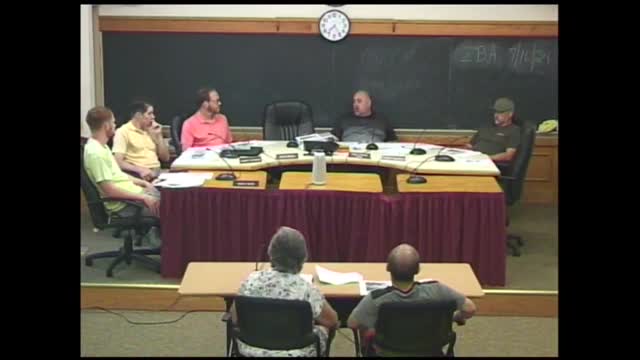Zoning Board Rejects Controversial Residential Conversion Proposal
September 03, 2024 | Town of Charlton, Worcester County, Massachusetts
This article was created by AI summarizing key points discussed. AI makes mistakes, so for full details and context, please refer to the video of the full meeting. Please report any errors so we can fix them. Report an error »

In a recent government meeting, officials discussed a proposal to convert an accessory structure into a principal residential unit, raising significant concerns about zoning regulations and neighborhood conformity. The structure in question, previously used for storage, does not meet the minimum requirements for a principal use, which include an 80,000 square foot lot and 300 feet of frontage. The current lot measures only 27,000 square feet with 100 feet of frontage.
Officials expressed empathy for the applicant's situation but highlighted the implications of granting such a request. One member noted that allowing this change could set a precedent, enabling future owners to use the structure as a residential unit indefinitely, potentially altering the character of the neighborhood. The discussion emphasized that no neighboring properties currently have similar back units designated as principal uses, which further complicates the decision.
Concerns were raised about the impact on the surrounding area, with officials questioning whether the proposed use aligns with the intent of existing bylaws. The need for more housing in the town was acknowledged, yet members remained cautious about approving a change that could lead to nonconformity with the neighborhood's established character. The meeting concluded without a definitive resolution, reflecting the complexities of balancing housing needs with zoning regulations and community standards.
Officials expressed empathy for the applicant's situation but highlighted the implications of granting such a request. One member noted that allowing this change could set a precedent, enabling future owners to use the structure as a residential unit indefinitely, potentially altering the character of the neighborhood. The discussion emphasized that no neighboring properties currently have similar back units designated as principal uses, which further complicates the decision.
Concerns were raised about the impact on the surrounding area, with officials questioning whether the proposed use aligns with the intent of existing bylaws. The need for more housing in the town was acknowledged, yet members remained cautious about approving a change that could lead to nonconformity with the neighborhood's established character. The meeting concluded without a definitive resolution, reflecting the complexities of balancing housing needs with zoning regulations and community standards.
View full meeting
This article is based on a recent meeting—watch the full video and explore the complete transcript for deeper insights into the discussion.
View full meeting
